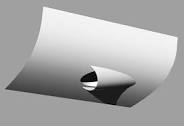sdowney717
Guru
- Joined
- Jan 26, 2016
- Messages
- 2,264
- Location
- United States
- Vessel Name
- Old Glory
- Vessel Make
- 1970 Egg Harbor 37 extended salon model
Instead of above water exhaust, why not exhaust completely underwater?
Advantages are less soot, less fumes, less engine exhaust smells, less CO, less air pollution for you to breathe in.
I was thinking a contoured or angled pipe type through hull, as long as you can not reverse siphon, so might have to have a small exhaust air hole above the water?
Advantages are less soot, less fumes, less engine exhaust smells, less CO, less air pollution for you to breathe in.
I was thinking a contoured or angled pipe type through hull, as long as you can not reverse siphon, so might have to have a small exhaust air hole above the water?








